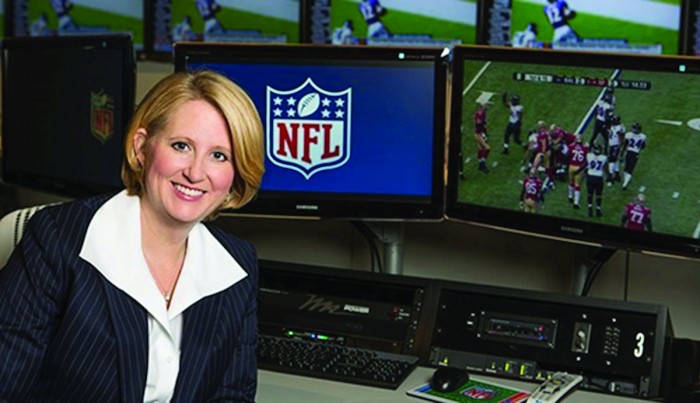Diversity and minority visibility in professional athletics has recently made international headlines, with the inauguration of new professional women’s sport leagues, such as the WNHL, the MLB implementing programs to increase female and minority job candidates, and new awards like the British Ethnic Diversity Sports Awards recognizing the diversity of elite athletes. Most recently, the NFL—a league notorious for an administration littered with middle-aged white males—has inaugurated a new rule to encourage more women in administrative roles, complementing their diversity-encouraging “Rooney Rule.” The Rooney Rule is over a dozen years old, and was inaugurated to combat bias against ethnic minorities applying for coaching jobs and front office positions. Now, in addition to interviewing at least one minority candidate when filling football operations positions, NFL teams must interview at least one woman to fill league executive office positions as well.
Since the Rooney Rule was implemented, minority coaches have gained more visibility behind the bench, perhaps because the rule has worked to counteract racial stigmas within the league. Currently there are five head coaches of colour in the NFL. Before the Rooney rule, only seven head coaches in the history of the NFL history were minorities. Behind the numbers, however, is a radically different story. Perhaps most tellingly, the number of minority coaching hires have stagnated, and even slightly declined, over recent years. The rule has definitely ensured that more minority candidates have been interviewed for NFL positions, and yet most coaches and executives are white. The same candidates tend to get recycled through a variety of teams, and most of these candidates are white. Though teams are required to interview minority candidates, it’s no guarantee that those candidates will be hired.
One cannot help but wonder whether this problem will recur in the hiring of women. Setting interviewing standards for women certainly gives talented females visibility in the hiring process, but implementing the rule just creates a soft quota that must be filled solely in the initial interviewing phase—as opposed to actually empowering women vying for a front-office position.
But similar to how the Rooney Rule de-stigmatized the visibility of minorities in professional football positions, the expansion to women might achieve a similar end, even if the outcome is not as pervasive as intended. Already in 2015, even without the rule, women have found employment in viable positions within the league. This year, Sarah Thomas became the NFL’s first female full-time official, Jen Welter became the first female to hold a coaching role when the Arizona Cardinals hired her as a pre-season intern, and Kathryn Smith of the Buffalo Bills scored a full-time coaching role—the first female to do so. Undoubtedly, all of this is progress, and through their actions, the NFL has asserted that they are committed to advancing this progress even further. Even though elements of the rule perhaps don’t go far enough in ensuring gender-equality, it’s definitely a positive first step.
Unfortunately, the rule is limited to a small number of professional leagues. Neither the NCAA nor the CIS have adopted similar rules for executive positions, and though the NCAA mandates gender equality in athletics with Title IX, many schools have been known to exaggerate, or even lie, about the amount of rostered female athletes to fulfill their quotas. In terms of executive positions, in the CIS only 72 out of 480 head coaches were female in 2013, and only two of those women coached men’s teams. The issue is nuanced, with questions about the qualifications of females wanting to coach remaining a legitimate problem, but the predicament remains the same: There are not enough female representatives in coaching and executive positions in athletics, at both the professional and collegiate level. Since the NFL recruits heavily from NCAA collegiate teams, they are in a unique position to pressure these collegiate teams to put similar gender-leveling rules in place – because though some professional leagues have taken a necessary initial measure to increase visibility, collegiate leagues noticeably haven’t, and they probably should.
In terms of representation of females in executive and coaching positions, McGill does adequately. Almost every varsity team has female representation on the coaching staff, the head of strength and conditioning— Laura Strenger—is a woman, and females are well represented on the executive committee. Though McGill seems to not need a policy to ensure female representation in athletics, other institutions might. And though McGill certainly has female representation in athletic administrative positions, it is by no means an equal representation in comparison to their male counterparts. Programs to develop the coaching or business prowess of female athletes while they’re still in university might allow them to be viable candidates for future front-office positions in sports. In the meantime, however, implementing a policy like the Rooney Rule across all leagues across North America would be a good first step in developing future female leaders in athletics.









